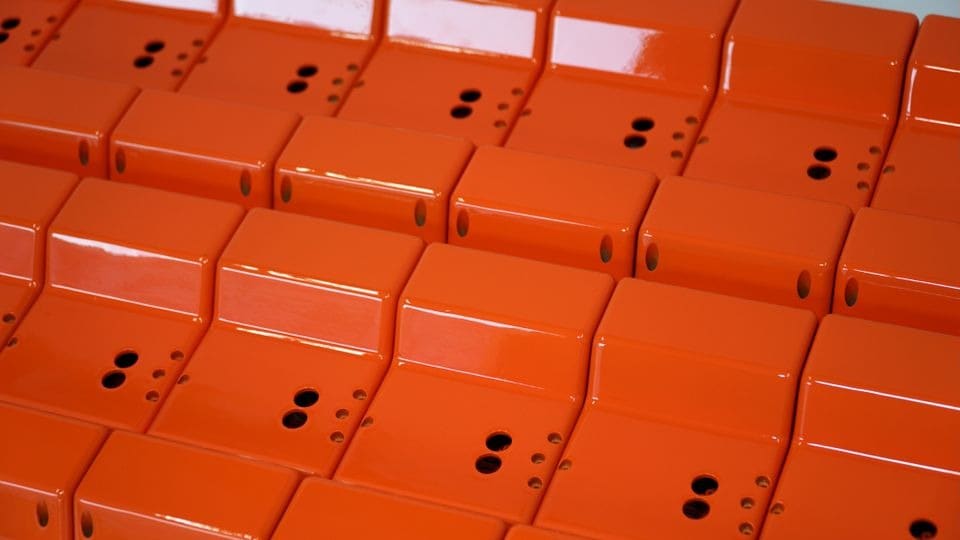Understanding Tolerances for Precision Parts Design: Manufacturing and Fit Tolerances
AUTHOR: Creallo Marketing Team|2025.07.17

Tolerance is a critical concept in manufacturing. It refers to the allowable variation in part dimensions — the difference between the designed dimensions and the actual manufactured dimensions. Without proper tolerances, parts may not assemble correctly or function as intended.
In this article, we’ll explore two key types of tolerances you should consider during 3D modeling: manufacturing tolerances and fit tolerances.
1. Manufacturing Tolerances
Manufacturing tolerances define the acceptable range of variation that can occur during the production of a part. Since it’s nearly impossible to manufacture parts with absolute dimensional accuracy due to the limitations of each process, tolerances are specified based on the characteristics of the process and materials used.
For example, metal parts generally require tighter tolerances than plastic parts.
| Processes | Manufacturing Tolerances |
|---|---|
| 3D Printing - SLA | ±0.2%, minimum ±0.2 mm |
| 3D Printing - SLS | ±0.3%, minimum ±0.3 mm |
| 3D Printing - SLM | ±0.3%, minimum ±0.3 mm |
| 3D Printing - FDM | ±0.5%, minimum ±0.5 mm |
| Vacuum Casting | ±0.5%, minimum ±0.5 mm |
| CNC Machining | See ISO 2768 standard table below |
Among Creallo’s supported processes, CNC machining offers the highest precision. Below are standard tolerances based on ISO 2768.
| ISO 2768 Standard for CNC Machining | ||
| Nominal Length Range | General Tolerance (±) | Fine Tolerance (±) |
| Less than 6 mm | 0.1 mm | 0.05 mm |
| 6 mm – <30 mm | 0.2 mm | 0.1 mm |
| 30 mm – <120 mm | 0.3 mm | 0.15 mm |
| 120 mm – <400 mm | 0.5 mm | 0.2 mm |
| 400 mm – <1000 mm | 0.8 mm | 0.3 mm |
2. Fit Tolerances
Fit tolerance refers to how the allowable variations of multiple parts affect the final assembly. This is one of the most frequently asked questions from our clients: How much gap should I leave between two parts to ensure proper fit?
While material characteristics can slightly influence fit tolerance, the values below offer general guidance for designing parts that are meant to fit together.

Recommended clearance for mating or hinge parts
| Fit Type | Material | Recommended Gap |
|---|---|---|
| 33D Printing - SLA | White Resin | 0.2mm |
| Black/Brown Resin | 0.2mm | |
| Clear/Translucent | 0.2mm | |
| 3D Printing - SLS | Nylon | 0.3mm |
| 3D Printing - SLM | All Materials | 0.3mm |
| 3D Printing - FDM | PLA / PETG / TPU | 0.5mm |
| Vacuum Casting | All Materials | 0.5mm |
| CNC Machining | All Materials | 0.5mm |
| 3D Printing - SLS | Nylon | 0.3mm |
| 3D Printing - SLM | All Materials | 0.2mm |
Fit Types
In addition to selecting the right tolerance, it's crucial to consider the fit type when designing parts that assemble together. The three main types are:

- Clearance Fit: This design leaves a consistent gap between the two mating parts, allowing for easy assembly and disassembly. Example: A shaft rotating freely in a bearing.
- Interference Fit: This type creates a tight, forceful connection by designing the parts to overlap slightly. It ensures a strong hold, but requires pressure for assembly and is difficult to disassemble. Example: Press-fitting a gear onto a shaft.
- Transition Fit: A hybrid of clearance and interference fits. Depending on the exact dimensions, parts may either have a small gap or slight interference. Commonly used in precision mechanical components.
3. Conclusion
Tolerances are essential for ensuring functional, high-quality parts. By taking both manufacturing and fit tolerances into account — along with the chosen process and materials — you can improve part accuracy, streamline production, and enhance overall product quality.
Whether you’re prototyping or scaling to production, be sure to incorporate tolerance considerations into your design from the very beginning to achieve optimal results.

